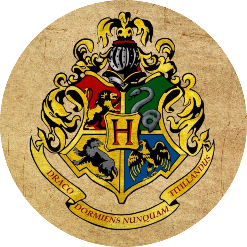Full Name Roselia Marlene Tudor
Age 15
Birthday August 31st
Sign Virgo
Info
- Nickname
Lia, Rosie - Nationality
British - Ethnicity
Caucasian-Japanese - Home
England - Status
crushing; Alive - Sexuality
Bisexual [in Denial] - Location
England - Year/Occupation
Fifth - House
Slytherin - Species
Witch - Family Blood
Half-Blood - Wand Core
Dragon Heartstring - Wand Wood
Cherry - Wand Arm
Right - Boggart
- Patronus
Boa Constrictor
Info
- Model
Choi Jisu - Eye Color
Brown - Hair Color
Brown - Height
5"7 - Distinguishing Marks
N/A - Disorders
N/A - Mental State
Stable
- Favorite Color
Yellow - Favorite Music Genre
R&B, Pop - Favorite Food
Creme Brulee - Favorite Animal
Peacocks - Favorite Book
N/A - Favorite Drink
Hot Chocolate - Favorite Song
7 Rings by Ariana Grande - Favorite Movie
N/A - Favorite Sweets
Pocky - Quirks
N/A - Talents
N/A - Skills
N/A - Languages
English - Etymology
N/A
ships
- Mother
Gregory Tudor (nee Sota) - Father
Eleanor Tudor - Full Siblings
Tobias - Half Siblings
N/A - Other
Tudor Family
Roselia is a girl that wants what she wants. Spoiled silly with attention since she was little, she always wants to be the center of everything. Expected to have things handed to her, she doesn't know the true value of hard work and would rather spend her time bribing people and manipulating others to get what she wants instead of the traditional method of just, y'know working towards a goal. She's fond of any type of shortcut she can get, and she's highly vindictive as well as ambitious. While her ambition is a fantastic trait of hers, it often gets her in a lot of trouble.
Roselia's ambition has been a producer of a great many things, but a positive attitude has not been one of them. Pessimistic and cynical, she often thinks in a straightforward and close minded mindset and doesn't believe in growth. She feels like everyone's playing cards are determined from the day they are born and they can never get new ones, so she learned how to use her deck of cards are well as possible. People call her selfish, she calls herself resourceful. Some say she's cold-hearted, she say she's strategical. Really, she could be called anything on a spectrum and she'd still find a way to twist it into something positive about her.
Although characterized a soul-less and cold-hearted figure, Roselia actually cares about people a lot. It's for this reason that she often masks how much she cares with cold gestures and abrasive dialogue. She's more often than not, afraid of her feelings and doesn't want to admit to herself how much her relationships with other people mean. She does this not only to avoid confronting her own feelings, but also to avoid confronting the impact she has when she manipulates or betrays other people. She claims to only work for one person, which is herself, but unbeknown to most, the people she holds dear to her heart often have a lot more control over her than they think.
The House of Tudor garnered its claim to the throne of England through the maternal line, which traced back to the Beauforts — an illegitimate line of children by Edward III's son John of Gaunt and his mistress, Katherine Swynford. This illegitimacy would normally render the whole line ineligible to inherit the throne, but this situation was made difficult when John of Gaunt and Katherine Swynford did indeed marry in 1396; a compromise was made, in that a papal bill declared the Beauforts legitimate (backed up by Parliament the following year) as did his legitimate son, Henry IV. However, he stipulated that the Beauforts, in exchange for legitimisation, must never inherit the throne.
The Beauforts were closely allied with Gaunt's legitimate line by his first marriage, the House of Lancaster. However, this did not make Henry of Richmond — later Henry VII — a legitimate heir, and neither did his father's ancestry. The legitimate heir was the Countess of Salisbury, but after the broken reigns of Queen Matilda in the early 12th century there was no precedent for women to be heirs to the throne (and wouldn't be until Mary I's accession in 1553.) Thus, a power vacuum was left, and the future Henry VI was left with the perfect opening.
Henry had spent much of his childhood in Brittany with his uncle, Jasper Tudor — he had been moved there after the murder of Lancastrian king Henry VI, and the death of his son Edward (presumably at the Battle of Tewkesbury) in 1471. At that point, young Henry of Richmond became the main face of the Lancastrian cause. He was no longer safe at Raglan Castle, the home of a leading Yorkist who would certainly have turned on them. The two fled to Brittany, while his mother Margaret Beaufort remained behind to advocate for the Lancastrians and form quiet alliances in the wake of Yorkist unpopularity, which came to a head in Richard III in 1483.
Margaret was able to make an agreement with Dowager Queen Elizabeth Woodville (wife of Edward IV) whose sons were presumably killed by Richard in the Tower of London to ensure his accession. Thus, a deal was made — that Elizabeth would support Henry's claim, if he would agree to marry her daughter Elizabeth of York and unite the houses — that would garner him key support he needed to triumph over Richard.
Two years after Richard III's accession, Henry and Jasper sailed to meet him in battle, where he was victorious at Bosworth on 22 August 1485 and declared himself Henry VII. To clear out people loyal to Richard, he would date his reign from 21 August, insinuating that all those who fought for Richard were guilty of treason.
Henry VII quickly moved to establish his kingship. In January 1486 he made good on his pledge, and married Elizabeth of York. This unified the houses and symbolised the end of the Wars of the Roses, shown by the heraldic emblem of the Tudor Rose — the Yorks' white rose laid over the Lancastrian red — which is, along with the Beaufort portcullis, still commonly seen today. The unification gave their children a stronger claim to the throne, of which they had seven, four of which survived infancy (Arthur, Henry, Margaret, and Mary) prior to Elizabeth of York's death in 1503.
Their first son Arthur, expected to inherit the throne, was born in September 1486. He was promised to Spanish princess Catherine of Aragon in 1489 through the Treaty of Medina del Campo. They married in 1501, but Arthur would die of sickness within months. The focus then turned to Henry's second son, also named Henry (the future Henry VIII.) Prior to this point, he had been expected to take a role in the church, but he would become king after his father's death in 1509, after which he would seek to marry his brother's widow. The negotiations would take a month before a papal dispensation was granted, and the negotiations were largely centred around the claim that Arthur and Catherine's marriage was never consummated. However, Catherine would not give Henry a son. She gave birth to many stillborn children, and their only son died after 52 days. Eventually, he feared the line would die out, and he was beginning to tire of his wife, six years his senior. He turned to his chief minister Cardinal Wolsey, hoping for an annulment — or rather, hoped that the previous papal dispensation would be rescinded. This would imply that Arthur and Catherine's marriage had indeed been consummated, rendering Catherine and Henry's marriage null and their sole surviving daughter, Mary, illegitimate. Wolsey failed to secure the annulment and thus fell from Henry's favour, though he continued to pursue it.
Henry aimed to marry Anne Boleyn, a lady-in-waiting of Catherine's with whom he had fallen in love. The English parliament enacted laws breaking ties with Rome, declaring the king Supreme Head of the Church of England, detaching the religious structure of England from the Catholic Church and the Pope. The newly appointed Archbishop of Canterbury, Thomas Cranmer, was then able to declare Henry's marriage to Catherine annulled. The former queen was swiftly removed from court, where she would spend the rest of her life under “protectorship” in various houses (essentially house arrest.)
Anne Boleyn gave birth to a daughter, Elizabeth, in 1533. Like Catherine, she would have various stillbirths. However, unlike Catherine, she was not simply divorced; in 1536 she was arrested on charges of high treason (for allegedly being unfaithful), witchcraft, and incest. Despite these charges most likely being made up, she was found guilty and executed in 1536.
He married four others — Jane Seymour, who gave Henry his only son, Edward VI, but died in 1537; Anne of Cleves, whom he swiftly divorced after discovering she looked nothing like her portrait; Catherine Howard, executed on similar grounds to Anne Boleyn; and Katherine Parr, who outlived him.
Henry died on 28 January 1547. His will reinstated his daughters by his annulled marriages to Catherine of Aragon and Anne Boleyn to the line of succession. Edward succeeded as Edward VI of England. Unfortunately, the boy king's regency was disturbed by the turbulent reigns of those trying to twist regency to their own advantage, the first being his uncle Edward Seymour, who took control and titled himself Duke of Somerset in February 1547, demonstrating complete control over Edward's council. He aimed to marry Mary, Queen of Scots to Edward, and thus impose Protestant religion on the Catholic Scotland. A bloody victory over the Scots at the battle of Pinkie Cleugh seemed to assure this, but the young queen was smuggled to France and betrothed to the Dauphin, later Francis II. Somerset was set back slightly by the lack of a Scottish marriage, but his decisive victory made him appear to be an unassailable ruler.
Under Somerset religious freedom was strongly restricted, which was not received well in southern, more traditionally Catholic portions of the country. The southern counties of Devon and Cornwall raised the Prayer Book Rebellion, forcing Somerset to send a military response and toughen the Crown's stance on Catholics. Mary, daughter of Catherine of Aragon, was a devout Catholic, and never renounced her faith, while Elizabeth, daughter of Anne Boleyn, was a moderate Protestant. John Dudley, Duke of Northumberland, removed a tyrannous Somerset from power as he had taken his nephew the king hostage. Under Northumberland, religious freedom decreased further, fuelled by a fear of a Catholic Queen as Mary was next in line.
Edward VI became ill in 1553. He wrote a statement rendering the will of his father null and void, bequeathing the throne to his cousin Lady Jane Grey, daughter of his aunt Princess Mary, as he too feared a Catholic regent and found Elizabeth too moderate to rule. Their relationship had also been strained by accusations of Elizabeth having had an affair with a married man in 1549, of which she was found not guilty. When Edward died in July, the throne passed to Lady Jane, who Northumberland married to his son Guildford for his own benefit. However, there was no appetite for this rule, and popular support for the rightful heir won out. Lady Jane was deposed after nine days and imprisoned, and Mary crowned Mary I of England.
Mary released key Catholic nobles from captivity and began to build her Privy Council. This proved difficult, however, as most members of it had been involved in attempting to put Lady Jane Grey on the throne. She would turn her attention to marriage, and seek an alliance through a marriage to Philip of Spain. Her English subjects were displeased, fearing the country would simply become a Habsburg outpost, and when she was adamant upon her plan rebellions began to break out — the most notable of which was Wyatt's Rebellion, which involved the father of Lady Jane. This rebellion was halted and as a result Lady Jane, her father, and her husband were all executed, as was the leader, Thomas Wyatt. Mary's Protestant sister Elizabeth, with whom the insurgents intended to replace Mary, was confined in the Tower of London and then put on house arrest.
Under the English common law doctrine of jure uxoris, the property and titles belonging to a woman became her husband's upon marriage. It was thus feared that should Mary marry, that man would become King of England, and English subjects did not want a Spaniard King of England who would care about Spanish affairs first and English second. There was no love to this marriage, it being pursued purely for the political gains it offered both. According to the marriage act, Philip would be titled "King of England", all official documents would be dated with both names, and Parliament would be called jointly — however, England would not be required to offer military assistance to Charles V, Philip's father, Philip could not act without the consent of Mary, and foreigners were not to be appointed to English office. A false pregnancy in 1555 culminated in Philip leaving court to command his armies.
Mary was well known for religious persecution, which got her the nickname "Bloody Mary". Under Mary, Protestant figures were imprisoned and burnt at the stake, including the former Archbishop of Canterbury, Cranmer. As part of the return to Catholicism, power was given back to Rome and the marriage of her parents was again declared valid, which ought to exclude her sister Elizabeth from succession. However, after another false pregnancy in 1557/58, she was forced to accept that Elizabeth would succeed her, and she died in November 1558, passing the throne onto her moderate Protestant sister.
It is here that the magical Tudor line begins — with Elizabeth I, known to Muggle society as the 'Virgin Queen.' The truth was that strain on magical-muggle relations was at its worst, and Elizabeth sought a solution to this as well as to the issue of Protestantism and Catholicism, and she eventually found it — in her favourite, Robert Dudley, 1st Earl of Leicester. There was, between them, a long-standing flirtation that had appeared to culminate in his wife, Amy Robsart, mysteriously being found dead at the bottom of a staircase in her home, around the same time as Elizabeth was reportedly considering marriage. No rumour his rivals tried would stick — why? Robert Dudley was himself a wizard, and Elizabeth seemed willing to find the moderate solution. Her family had magical links, through her great-great-grandmother Jacquetta of Luxembourg, mother of Elizabeth Woodville, who had been 'suspected' of witchcraft, and though it had turned out to be nothing, the queen herself had once suspected she may be magic.
Wanting a solution to these divisive problems, she married the Earl in secret and, with magic to veil the fact, carried and gave birth to a son, Owen in 1578. After he was safely removed unto magical society where he would be protected, Robert performed a fake 'cover marriage' to a courtier with whom he had been flirting, Lettice Knollys. To convince the rest of the story, and to protect herself should the Earl be exposed as a wizard, Elizabeth banished Knollys from court in an apparent fit of jealousy. Knollys was a witch, and this new distance from the queen allowed her and Dudley to raise the Tudor heir to initiate Robert and Elizabeth's plan — to separate the muggle and magical societies and crowns, and allow both to live in peace and harmony. As a legitimate child of the monarch, and a magical one (as was made apparent by a rather interesting display of fire) Owen would be eligible for this new crown, and he would spend the next twenty years trying to ensure it, for much of this time in solely magical areas where people had moved to get away from persecution and violence.
He was killed by an insurgent who despised the idea of wizards being forced into hiding, and his wife Margaret went into hiding herself, pregnant with his heir. However, when the societies separated officially at last in 1692 the Tudors were living more openly, the risk passed. However, when Princess Charlotte recognised as magical regent sometime after, the Tudors were enraged that they had their birthright seized from them. It was their belief they had a right to the throne, but to appease them and stifle mutterings of outright rebellion from the Tudor House, it was agreed that in return for fealty, members of the House of Tudor would be styled Lord / Lady ___ of House Tudor, and the family as a whole would receive an amount of land, similar to the agreement reached upon between the new Monarchs and House Boleyn, with whom the Tudors had forged a tentative peace with, following their decision to sign an acknowledgment dismissing the false charges against Anne Boleyn. The Tudors were amenable to this settlement, and thus it has been to this day, although it would not do to raise the Tudors' ire — at the end of it all, they still have a claim to the throne.
Eleanor Tudor was a lady of adventure. Often transversing the world to explore different cultures, she loved the foreign world and wanted to become closer to it, so it's no wonder how she fell in love with a Japanese-American man she met in Italy named Gregory Sota. Now Gregory was a wealthy man, had known riches since he was a child and managed his affairs effortlessly as if he was born simply to live a lavish life. They met on a gondola in the canals of Venice and kept in contact afterward. They were only friends at that point. not knowing they'd soon become the closest of lovers.
Quite to the contrary, the two did not hit off immediately. Gregory asked for her hand immediately, Eleanor denied him and asked him out on a date and then sparks flew. Before they knew it, they were married the following summer. Just two years into their marriage were their children conceived, a boy and a girl. Although Gregory wasn't particularly excited about his son, he promptly fell in love with his daughter the moment he saw her and made sure she had the best life. Meanwhile, Eleanor was beginning to neglect the family as a whole, finding her children's antics tiresome, and her husband, dare I say it, boring.
Roselia grew up a spoiled child. Her father's favorite, she was constantly given whatever she wanted. Adored by the media and exposed to, really the only good things about her, she grew up self-conceited and cocky. When a few things in life didn't go her way, she began to develop a very cynical view of the world from a young age. She began to believe that you can only get things based on your status now, and it wasn't something that could just be changed. This prompted her to enforce herself as higher above others, often treating servants and her peers unfairly.
When she was just six and a half, she had her first magic sign. One of grandeur, as one would have it. It was something only fitting of a Tudor, wouldn't you say? The whole family was preparing for a grandiose ball of sorts, and Roselia intended to be the best dressed there. An ambitious yet expectantly shallow goal of hers that she managed to accomplish through simply her desire and her undiscovered magic. After throwing a tantrum over a dress that had been personally tailored for her, that wasn't to her liking at all, she literally kicked the failed servant out of the castle with a giant magic boot. And then, she had the dress fixed. Overdramatic much? It's quite expected as this point.
Servants quickly got sick of the young, spoiled girl, who her father could never say no to and avoided her as much as possible to avoid getting abused by her sharp words and hissy fits. She seemed to calm down as she grew, but with a lessening in fits, her snappy attitude developed to compensate. A girl with a silver tongue, at the age of nine, she even dared to challenge her mother on a regular basis. Honestly, discipline that girl, they'd say, whispers here and there from different sources. But no matter what, Roselia remained unrestrained, spoiled, and feared more than ever.
Entering Hogwarts was a nightmare for everyone involved, except maybe the Tudor family and Slytherin, who benefited from having a royal in their house. Her professors hated her guts, students didn't like being around her, and she definitely was less of a friend and a definite foe for everyone. It didn't matter because whether they liked it or not, Roselia would still always get what she wanted.















